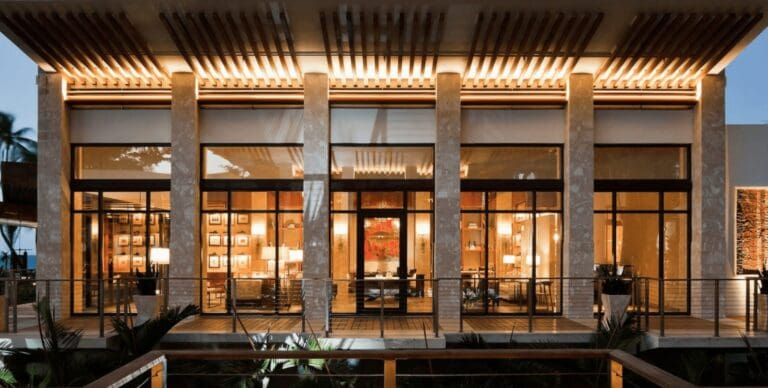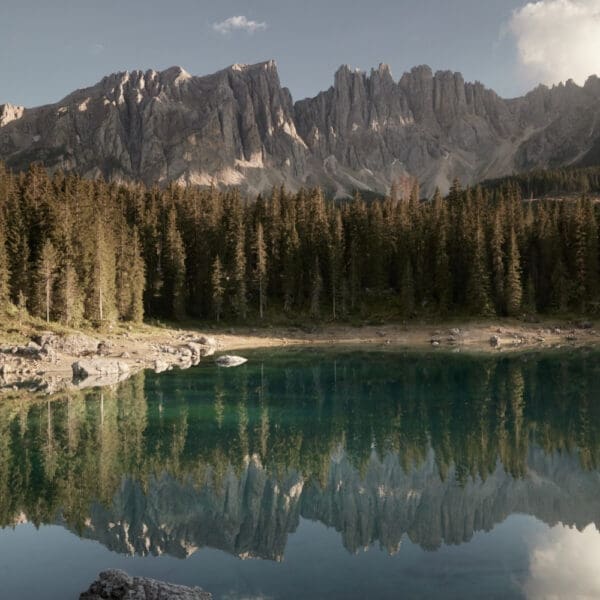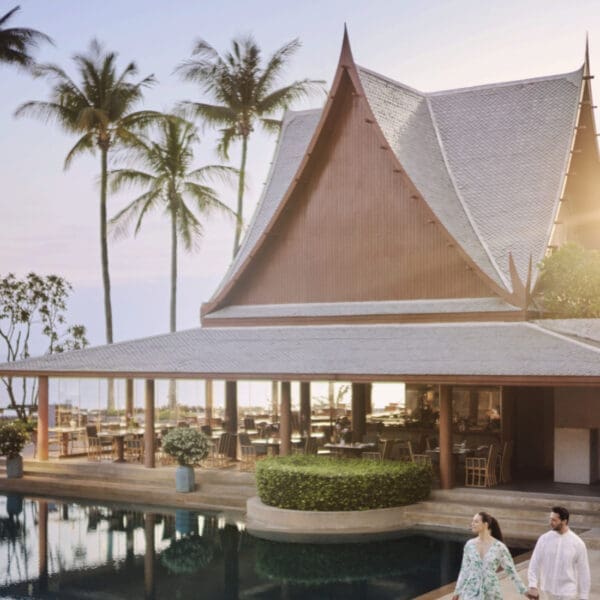“2022 has been a year of travel with people yearning for adventure, ticking big destinations off their bucket list, and in general, making up for time spent lost in forced solitude during the pandemic,” said SB Architects President and Principal, Scott Lee. “Even with economic uncertainty, we’re cautiously optimistic for the sector, there’s a great demand for experiences that immerse guests in nature and a heavy emphasis on experiential design, which will continue to define hospitality in 2023.”

New generational impacts: Millennial and Gen Z driving travel trends
How do we define luxury today when the concept is evolving rapidly? The paradigm is shifting from goods to experiential to transformational, travelers are becoming more intentional about what they spend, where they spend it, and what they spend it on. At the top of that list are Millennials. With higher disposable incomes and different priorities from previous generations, they’re shaping the future luxury landscape. They want authentic, shareable experiences that fit in with their socially conscious mindset.
Similarly, Millennials’ younger counterparts, Gen Z, are impacting travel decisions. As a tech-fluent generation, Gen Z has grown up exposed to the world and its many travel possibilities. According to Expedia Group, they’re the generation most likely to travel outside the United States, with most favoring off-the-beaten-path destinations. While they’re young and not earning significant incomes yet, Gen Z influences family spending decisions and persuades others to adopt their preference for active experiences and unusual destinations.
Adaptive hospitality: the diversification of revenue
The need for community and connection is rapidly increasing, reviving the, somewhat outdated, concept of a ‘members’ club’. If you look at previous generations, their social hub was something akin to a golf club and the current consumer is looking for a taste of that, somewhere to build a community and connect with like-minded individuals. In reaction to this demand, more hotels are taking an adaptive approach to programming and diversifying their revenue, going beyond ultra-exclusive swanky bars and lounges, and embracing an intersection of wellness, hospitality, and even education. Rooms are no longer the main attraction; the focus is shifting toward amenity and social offerings. Hotels are becoming part hotel, part gastro-destination, part workspace, part wellness, part creative hub, and part members’ club, which not only provides guests with an abundance of choices, but it encourages them to linger, spend on-site, and taps into the innate need for communal spaces.
‘Bleisure’ travel was on the rise last year, and with the increase in hybrid working, it is gaining momentum, but there’s the desire to work from home, without necessarily working from home, and hotels are adapting to allow guests to travel on their own terms, whilst offering diverse experiences and opportunities to interact.
No longer niche: glamping reaches new heights
Social and consumer change, post-lockdown restrictions, has fed into the growing interest and demand for access to the outdoors. Travelers are eager to disconnect and delve into nature through off-the-grid experiences, that combine the wild outdoors craving with the luxuries and conveniences of a resort.
While some have their sights set on bucket list destinations in far-flung locales, many travelers are content to venture to the nearest national park, or local outdoor destination, through camping and caravanning. According to Research and Markets, the global market for these activities is expected to grow by 6.6. percent by 2025. National campground companies are tapping into the increased interest in camping and traveling by RVs by adding resort-like accommodations and integrating theme-park attractions into their locations.
According to a 2022 Terramor North American Glamping Report, approximately 17 million households took at least one glamping trip in 2021, a 155% increase from 2019. Glamping business brands are seizing the opportunity to tap into consumers’ increased awareness and interest in glamping, and short-term rental options that make glamping-type accommodations available online are booming, as the restorative effect of being in nature continues to be a salve for uncertain times.
The next era for wellness environments: transformative, highly curated, and communal
The furor around wellness isn’t going anywhere, as one of the fastest-growing sectors, it’s continuing and will continue to influence and shape hotel design. More people are adopting a mindset in which wellness is not necessarily a solitary pursuit. Moving beyond the spa, hotels are providing experiences that enable guests to focus on improving their mind, body, and spirit. For many, the spa has become a vehicle for living a high-performing life. More luxury resort properties are catering to a “work hard, play hard” mentality with offerings geared toward recovery from extreme sports and active pursuits.
A partner in many of SB Architect’s hospitality projects, TLEE Spas + Wellness, is seeing demand for spas that function as an integrated wellness destination, combining mindfulness, opportunities for social gathering and exercise, and tailored treatments that help guests achieve personal goals. Willowbrook Spa at The Lake House on Canandaigua was designed to be a springboard to wellness in many forms. Here, guests can personalize everything from their massage oil to herbal tinctures, while in the Sunroom, a lounge environment features an abundance of natural light, fresh airflow, and inspiring views toward the Spa Garden where private barrel saunas overlook the lake. Each sauna pod comes with its own outdoor shower and resting area to form a self-contained al fresco contrast bathing circuit for individuals, couples, or small groups.
Vertical architecture: living the high life
Over the last decade, we’ve seen skylines changing with the uptick in skyscrapers. Domestically and globally, the interest is rising, with more developments in the pipeline, highlighting a new vertical way of life.
Once only embraced in cities like New York City and Dubai, in 2023, supertall, modernist towers with mixed-use components will be embraced by the luxury sector, with residents reveling in the high life, complete with fantastic views. Vertical high-rises are seen as an area for growth in cities such as Miami, where SB Architects is working on numerous projects. Miami is becoming an urban destination due to its high-rise construction boom, there are currently over 22 supertall developments under construction in the area, including the Waldorf Astoria Hotel & Residences in Brickell, due to open in 2027, in which TLEE Spas + Wellness has conceived a new wellness ecosystem.
By tapping into sensibilities that one might leverage in a horizontal resort environment, and applying them to an urban context, designers can create spaces where people can “get away from it all” while remaining in the middle of it.
Long live the links: golf’s revival
Over the last decade, golf experienced a decline in popularity, but that’s been reignited by a renewed interest and modernization of the game. The demand for social connection and the urge to create communities around shared interests, alongside a new generation of millennial golfers, is ushering in a new era of the sport.
Playing a role in the repositioning of golf in America, SB Architects is working on various golf-focused projects, including the Omni PGA Frisco Resort in Frisco, Texas, home of the new PGA Headquarters. Opening in early 2023, the new 510-key resort will redefine ‘Texas Modern’ architecture, creating a sought-after destination for golf enthusiasts and those looking for an amenities-driven retreat. The destination embodies an experiential hospitality ethos with a program focused on bringing together golf, retail, and entertainment. We’ve also seen a rise in the grassless game too, with golf simulators being integrated into the Omni PGA Frisco Resort, appealing to, and engaging a younger audience.
Another notable project, The LINK, is adjacent to the Omni PGA Frisco Resort – a 240-acre mixed-use district with Class A office, destination retail, luxury residential, dynamic entertainment, boutique hospitality, and sports-focused wellness uses.
“With our global portfolio, we have our ears to the ground of what’s resonating in the luxury hospitality market, and our team is energized by the continued interest in experiential travel and a holistic focus on wellness,” said Bruce Wright, Senior Vice President and Principal at SB Architects. “We see 2023 as a promising year for the evolution of luxury design, especially in the hospitality sector, where designing experiences that are truly individualized to meet changing needs is going to garner attention.”



















